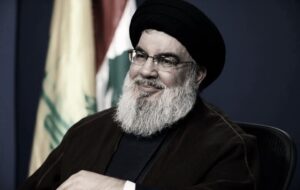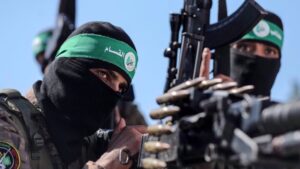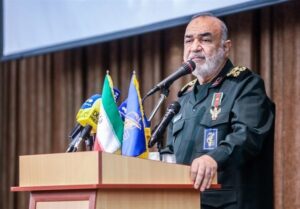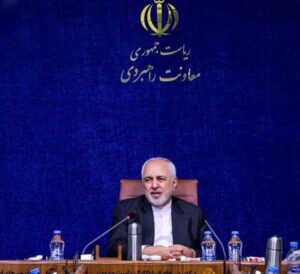How will the war on Gaza end?

There is more than one scenario as to how the Israeli war on the Gaza Strip will stop.
There could be a wider conflict in the region that would force the Israeli regime to end its “indiscriminate” strikes. Indiscriminate is a term that is now being used by President Joe Biden, but his administration is sending more weapons to Israel.
Israeli Prime Minister Benjamin Netanyahu says the regime will fight for as long as it takes to “eradicate Hamas”.
This statement should be studied and considered in the context of one of the scenarios on how the war will end.
According to analysts, the Israeli regime is committed to continuing its aggression against Gaza for many weeks and perhaps even for many months to come.
What can shorten that period of many weeks and many months because the longer the war continues, the more Palestinian civilians will be killed, the majority of whom are women and children.
The damage that the Palestinian resistance is inflicting on the regime’s ground forces is one scenario that can put an end to this war and push the regime into serious negotiations over a prisoner exchange.
Experts say Hamas and the Palestinian Islamic Jihad are doing exactly that by destroying the capabilities of the Israeli army.
It is important to highlight that the Israeli army had previously refrained from a ground incursion into Gaza, knowing the price its soldiers pay.
What changed this time was the calculations of the regime in that it lost hundreds of troops on October 7, and the consensus was that it would not lose so many in any ground offensives and so it decided to press ahead with “a ground invasion”.
Some experts have pointed out that the Israeli regime is waging its ground offensives in three phases.
The initial 20-day bombardment is not considered a phase but a campaign of shock and awe, terror, and an attempt to weaken Palestinian morale. It didn’t work, and so the Israeli regime headed for a ground offensive.
If the Israeli military wanted to claim its sovereignty over Gaza by only dropping bombs from the air it can neither “eradicate Hamas” nor bring about a victory which the regime is desperately seeking.
The first phase was the ground offensives in northern Gaza, where the Israeli military has yet to achieve anything.
A few days ago, Israel claimed it had taken control of northern Gaza, and today, most of the battles are taking place in northern Gaza.
The Israeli claims surrounding the al-Shifa hospital raid in northern Gaza were one of the biggest scandals by the regime.
Where were those Hamas leaders and the Hamas command center that the Israeli military claimed were hidden under the hospital?
The Israelis didn’t achieve anything in northern Gaza apart from its elite Golani forces withdrawing from the battlefield and returning to their bases, having suffered a large number of casualties.
The second phase has been Khan Younis, where the regime claims Hamas and Palestinian Islamic Jihad have fled to.
This is despite the fact that the Palestinian resistance is still fighting in northern Gaza. And if the resistance isn’t killing Israeli soldiers in northern Gaza, then who is?
Again, the regime has suffered heavy losses in Khan Younis and is now speaking about a third phase.
From a logical point of view, there is no third point of destination for the Israeli army to operate in Gaza apart from Rafah?, which means, in the third phase, the fighting will expand to the Egyptian border.
The problem the regime faces is that it has been unable to break the resolve of the Palestinian resistance.
What it is conducting is a campaign of death and destruction against civilians. It is reducing most of the enclave to rubble in a bid to please its settler population.
But this comes at a price that analysts believe will prove large for the regime to pay.
The military casualties will continue to grow to such an extent that the regime’s army will suffer from severe fatigue and a lack of will to continue fighting.
Hamas says it has destroyed more than 750 Israeli military vehicles since the ground offensives began. Tanks are being blown up on a daily basis.
Yet the Israeli military still claims it is in control of parts of the urban areas of the Gaza Strip.
From a military perspective, controlling an area means clearing it first and then taking full control of that area, and only after that has been achieved, advancing to the next area.
But at the same time, the Israeli army must keep a second military unit stationed and in control of the first area so that it cannot be taken over again by the Palestinian resistance fighters.
So far, the Israeli military has been unable to establish this simple military strategy in urban warfare in one single spot of the Gaza Strip.
This is another major sign of weakness and fatigue among the Israeli army.
The longer it continues the ground offensives in Gaza, the more this fatigue will weigh into the Israeli army.
At the end of the day, Netanyahu and his war minister Yoav Gallant say the war in Gaza is extracting heavy prices, in reference to the Israeli soldiers who have been killed.
The Israeli military has announced that around 160 soldiers have been killed so far in Gaza. On a daily basis, it announces the names of 3, 5, 10, or 15 soldiers who are being killed.
Yet the number of around 160 soldiers who have been killed so far appears to have not been revised.
At the end of the day, it may not even be the number of Israeli army casualties (which some Israeli media outlets have put in the thousands and others in the tens of thousands – between those killed and injured – and then been forced to withdraw the reports by the regime itself).
It may not come down to casualties, although that would explain why the regime withdrew 10,000 soldiers from the north (against Hezbollah) and another 10,000 from the West Bank and deployed them to Gaza.
Experts believe the war will end when Israeli army fatigue begins to take a seriously heavy toll.
Hamas and the Palestinian Islamic Jihad are still firing missiles. They are still militarily intact. Their morale has increased according to analysts. And in phase two, Khan Younis, is where many predict more ferocious fighting will take place. Much more than in northern Gaza.








